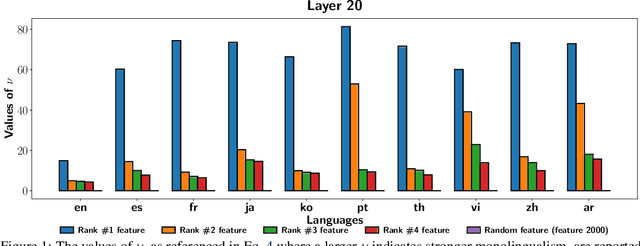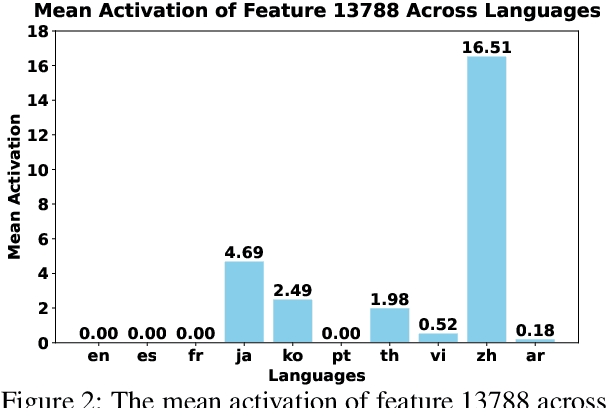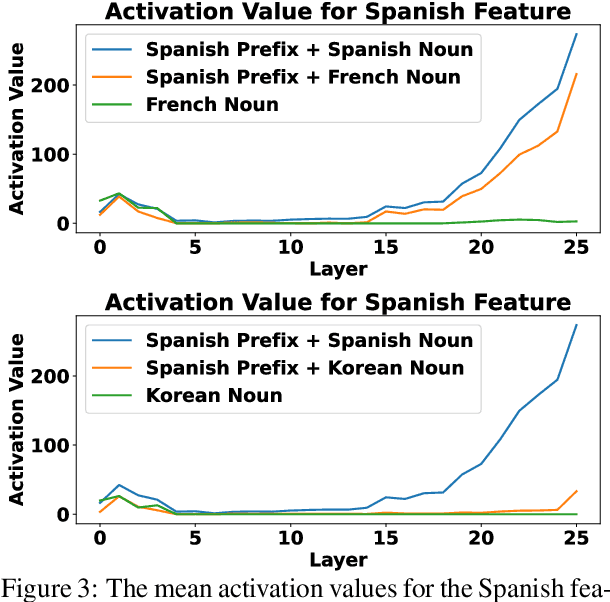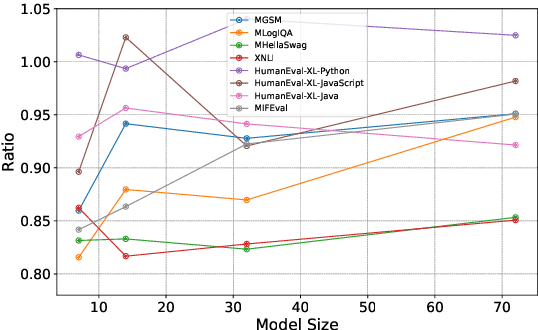Yidan Zhang
ReSeDis: A Dataset for Referring-based Object Search across Large-Scale Image Collections
Jun 18, 2025Abstract:Large-scale visual search engines are expected to solve a dual problem at once: (i) locate every image that truly contains the object described by a sentence and (ii) identify the object's bounding box or exact pixels within each hit. Existing techniques address only one side of this challenge. Visual grounding yields tight boxes and masks but rests on the unrealistic assumption that the object is present in every test image, producing a flood of false alarms when applied to web-scale collections. Text-to-image retrieval excels at sifting through massive databases to rank relevant images, yet it stops at whole-image matches and offers no fine-grained localization. We introduce Referring Search and Discovery (ReSeDis), the first task that unifies corpus-level retrieval with pixel-level grounding. Given a free-form description, a ReSeDis model must decide whether the queried object appears in each image and, if so, where it is, returning bounding boxes or segmentation masks. To enable rigorous study, we curate a benchmark in which every description maps uniquely to object instances scattered across a large, diverse corpus, eliminating unintended matches. We further design a task-specific metric that jointly scores retrieval recall and localization precision. Finally, we provide a straightforward zero-shot baseline using a frozen vision-language model, revealing significant headroom for future study. ReSeDis offers a realistic, end-to-end testbed for building the next generation of robust and scalable multimodal search systems.
Unveiling Language-Specific Features in Large Language Models via Sparse Autoencoders
May 08, 2025



Abstract:The mechanisms behind multilingual capabilities in Large Language Models (LLMs) have been examined using neuron-based or internal-activation-based methods. However, these methods often face challenges such as superposition and layer-wise activation variance, which limit their reliability. Sparse Autoencoders (SAEs) offer a more nuanced analysis by decomposing the activations of LLMs into sparse linear combination of SAE features. We introduce a novel metric to assess the monolinguality of features obtained from SAEs, discovering that some features are strongly related to specific languages. Additionally, we show that ablating these SAE features only significantly reduces abilities in one language of LLMs, leaving others almost unaffected. Interestingly, we find some languages have multiple synergistic SAE features, and ablating them together yields greater improvement than ablating individually. Moreover, we leverage these SAE-derived language-specific features to enhance steering vectors, achieving control over the language generated by LLMs.
LLaVA-UHD v2: an MLLM Integrating High-Resolution Feature Pyramid via Hierarchical Window Transformer
Dec 18, 2024Abstract:In multimodal large language models (MLLMs), vision transformers (ViTs) are widely employed for visual encoding. However, their performance in solving universal MLLM tasks is not satisfactory. We attribute it to a lack of information from diverse visual levels, impeding alignment with the various semantic granularity required for language generation. To address this issue, we present LLaVA-UHD v2, an advanced MLLM centered around a Hierarchical window transformer that enables capturing diverse visual granularity by constructing and integrating a high-resolution feature pyramid. As a vision-language projector, Hiwin transformer comprises two primary modules: (i) an inverse feature pyramid, constructed by a ViT-derived feature up-sampling process utilizing high-frequency details from an image pyramid, and (ii) hierarchical window attention, focusing on a set of key sampling features within cross-scale windows to condense multi-level feature maps. Extensive experiments demonstrate that LLaVA-UHD v2 achieves superior performance over existing MLLMs on popular benchmarks. Notably, our design brings an average boost of 3.7% across 14 benchmarks compared with the baseline method, 9.3% on DocVQA for instance. We make all the data, model checkpoint, and code publicly available to facilitate future research.
P-MMEval: A Parallel Multilingual Multitask Benchmark for Consistent Evaluation of LLMs
Nov 14, 2024



Abstract:Recent advancements in large language models (LLMs) showcase varied multilingual capabilities across tasks like translation, code generation, and reasoning. Previous assessments often limited their scope to fundamental natural language processing (NLP) or isolated capability-specific tasks. To alleviate this drawback, we aim to present a comprehensive multilingual multitask benchmark. First, we present a pipeline for selecting available and reasonable benchmarks from massive ones, addressing the oversight in previous work regarding the utility of these benchmarks, i.e., their ability to differentiate between models being evaluated. Leveraging this pipeline, we introduce P-MMEval, a large-scale benchmark covering effective fundamental and capability-specialized datasets. Furthermore, P-MMEval delivers consistent language coverage across various datasets and provides parallel samples. Finally, we conduct extensive experiments on representative multilingual model series to compare performances across models, analyze dataset effectiveness, examine prompt impacts on model performances, and explore the relationship between multilingual performances and factors such as tasks, model sizes, and languages. These insights offer valuable guidance for future research. The dataset is available at https://huggingface.co/datasets/Qwen/P-MMEval.
Self-guided Few-shot Semantic Segmentation for Remote Sensing Imagery Based on Large Vision Models
Nov 22, 2023


Abstract:The Segment Anything Model (SAM) exhibits remarkable versatility and zero-shot learning abilities, owing largely to its extensive training data (SA-1B). Recognizing SAM's dependency on manual guidance given its category-agnostic nature, we identified unexplored potential within few-shot semantic segmentation tasks for remote sensing imagery. This research introduces a structured framework designed for the automation of few-shot semantic segmentation. It utilizes the SAM model and facilitates a more efficient generation of semantically discernible segmentation outcomes. Central to our methodology is a novel automatic prompt learning approach, leveraging prior guided masks to produce coarse pixel-wise prompts for SAM. Extensive experiments on the DLRSD datasets underline the superiority of our approach, outperforming other available few-shot methodologies.
HeightFormer: A Multilevel Interaction and Image-adaptive Classification-regression Network for Monocular Height Estimation with Aerial Images
Oct 12, 2023Abstract:Height estimation has long been a pivotal topic within measurement and remote sensing disciplines, proving critical for endeavours such as 3D urban modelling, MR and autonomous driving. Traditional methods utilise stereo matching or multisensor fusion, both well-established techniques that typically necessitate multiple images from varying perspectives and adjunct sensors like SAR, leading to substantial deployment costs. Single image height estimation has emerged as an attractive alternative, boasting a larger data source variety and simpler deployment. However, current methods suffer from limitations such as fixed receptive fields, a lack of global information interaction, leading to noticeable instance-level height deviations. The inherent complexity of height prediction can result in a blurry estimation of object edge depth when using mainstream regression methods based on fixed height division. This paper presents a comprehensive solution for monocular height estimation in remote sensing, termed HeightFormer, combining multilevel interactions and image-adaptive classification-regression. It features the Multilevel Interaction Backbone (MIB) and Image-adaptive Classification-regression Height Generator (ICG). MIB supplements the fixed sample grid in CNN of the conventional backbone network with tokens of different interaction ranges. It is complemented by a pixel-, patch-, and feature map-level hierarchical interaction mechanism, designed to relay spatial geometry information across different scales and introducing a global receptive field to enhance the quality of instance-level height estimation. The ICG dynamically generates height partition for each image and reframes the traditional regression task, using a refinement from coarse to fine classification-regression that significantly mitigates the innate ill-posedness issue and drastically improves edge sharpness.
IRGen: Generative Modeling for Image Retrieval
Mar 27, 2023Abstract:While generative modeling has been ubiquitous in natural language processing and computer vision, its application to image retrieval remains unexplored. In this paper, we recast image retrieval as a form of generative modeling by employing a sequence-to-sequence model, contributing to the current unified theme. Our framework, IRGen, is a unified model that enables end-to-end differentiable search, thus achieving superior performance thanks to direct optimization. While developing IRGen we tackle the key technical challenge of converting an image into quite a short sequence of semantic units in order to enable efficient and effective retrieval. Empirical experiments demonstrate that our model yields significant improvement over three commonly used benchmarks, for example, 22.9\% higher than the best baseline method in precision@10 on In-shop dataset with comparable recall@10 score.
MVImgNet: A Large-scale Dataset of Multi-view Images
Mar 10, 2023



Abstract:Being data-driven is one of the most iconic properties of deep learning algorithms. The birth of ImageNet drives a remarkable trend of "learning from large-scale data" in computer vision. Pretraining on ImageNet to obtain rich universal representations has been manifested to benefit various 2D visual tasks, and becomes a standard in 2D vision. However, due to the laborious collection of real-world 3D data, there is yet no generic dataset serving as a counterpart of ImageNet in 3D vision, thus how such a dataset can impact the 3D community is unraveled. To remedy this defect, we introduce MVImgNet, a large-scale dataset of multi-view images, which is highly convenient to gain by shooting videos of real-world objects in human daily life. It contains 6.5 million frames from 219,188 videos crossing objects from 238 classes, with rich annotations of object masks, camera parameters, and point clouds. The multi-view attribute endows our dataset with 3D-aware signals, making it a soft bridge between 2D and 3D vision. We conduct pilot studies for probing the potential of MVImgNet on a variety of 3D and 2D visual tasks, including radiance field reconstruction, multi-view stereo, and view-consistent image understanding, where MVImgNet demonstrates promising performance, remaining lots of possibilities for future explorations. Besides, via dense reconstruction on MVImgNet, a 3D object point cloud dataset is derived, called MVPNet, covering 87,200 samples from 150 categories, with the class label on each point cloud. Experiments show that MVPNet can benefit the real-world 3D object classification while posing new challenges to point cloud understanding. MVImgNet and MVPNet will be publicly available, hoping to inspire the broader vision community.
RMBR: A Regularized Minimum Bayes Risk Reranking Framework for Machine Translation
Mar 01, 2022



Abstract:Beam search is the most widely used decoding method for neural machine translation (NMT). In practice, the top-1 candidate with the highest log-probability among the n candidates is selected as the preferred one. However, this top-1 candidate may not be the best overall translation among the n-best list. Recently, Minimum Bayes Risk (MBR) decoding has been proposed to improve the quality for NMT, which seeks for a consensus translation that is closest on average to other candidates from the n-best list. We argue that MBR still suffers from the following problems: The utility function only considers the lexical-level similarity between candidates; The expected utility considers the entire n-best list which is time-consuming and inadequate candidates in the tail list may hurt the performance; Only the relationship between candidates is considered. To solve these issues, we design a regularized MBR reranking framework (RMBR), which considers semantic-based similarity and computes the expected utility for each candidate by truncating the list. We expect the proposed framework to further consider the translation quality and model uncertainty of each candidate. Thus the proposed quality regularizer and uncertainty regularizer are incorporated into the framework. Extensive experiments on multiple translation tasks demonstrate the effectiveness of our method.
Camera Model Anonymisation with Augmented cGANs
Feb 18, 2020



Abstract:The model of camera that was used to capture a particular photographic image (model attribution) can be inferred from model-specific artefacts present within the image. Typically these artefacts are found in high-frequency pixel patterns, rather than image content. Model anonymisation is the process of transforming these artefacts such that the apparent capture model is changed. Improved methods for attribution and anonymisation are important for improving digital forensics, and understanding its limits. Through conditional adversarial training, we present an approach for learning these transformations. Significantly, we augment the objective with the losses from pre-trained auxiliary model attribution classifiers that constrain the generator to not only synthesise discriminative high-frequency artefacts, but also salient image-based artefacts lost during image content suppression. Quantitative comparisons against a recent representative approach demonstrate the efficacy of our framework in a non-interactive black-box setting.
 Add to Chrome
Add to Chrome Add to Firefox
Add to Firefox Add to Edge
Add to Edge